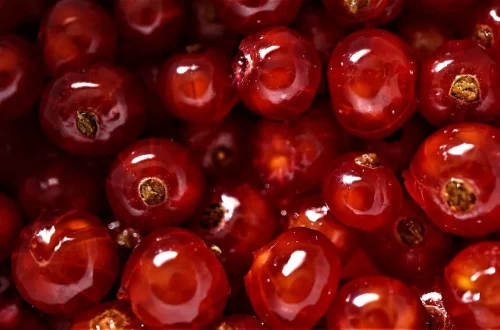
How to Make Incense Oil: A Step-by-Step Guide
Creating your own incense oil can be a captivating and rewarding experience. The art of making incense oil has been practiced for centuries, with roots in various cultures around the world. The soothing scents of these oils can enhance meditation, promote relaxation, and create an inviting atmosphere in any space. Whether you are looking to elevate your spiritual practices or simply enjoy the aromatic benefits, understanding the fundamentals of incense oil production can provide you with a satisfying and creative outlet.
The process of crafting incense oil involves a series of steps that require careful attention and a bit of patience. The quality of your ingredients plays a crucial role in determining the final fragrance and effectiveness of your oil. From selecting the right base oils to incorporating the desired essential oils or resins, every choice you make contributes to the overall outcome. Additionally, understanding the properties of various ingredients will help you create blends that resonate with your personal preferences and aromatic goals.
As we delve deeper into the world of incense oil creation, you will discover the intricacies involved in selecting the right materials, the methods of extraction, and tips for proper storage. This journey not only enriches your sensory experience but also connects you to a long-standing tradition that celebrates the power of scent.
Choosing the Right Ingredients for Incense Oil
The first step in creating incense oil is selecting the right ingredients. The choice of base oils and essential oils or resins significantly impacts the final fragrance and therapeutic properties of your incense oil. Base oils serve as the carrier for the essential oils, providing a medium that allows for easy application and diffusion. Common base oils include jojoba oil, sweet almond oil, and fractionated coconut oil. Each of these oils has its own unique properties that can enhance the overall experience of your incense.
When it comes to essential oils, the possibilities are nearly endless. Popular choices for incense oil include sandalwood, frankincense, myrrh, and patchouli. Each essential oil has its own distinct aroma and benefits. For example, sandalwood is known for its calming properties, while frankincense is often used in spiritual practices due to its grounding effects. Myrrh adds a warm, rich scent and is often associated with healing, while patchouli brings a deep, earthy aroma that can evoke feelings of relaxation and comfort.
In addition to essential oils, you might consider incorporating natural resins into your incense oil. Resins like copal, benzoin, and dragon’s blood can add complexity to your blend and enhance the longevity of the fragrance. When choosing your ingredients, it’s essential to consider how they will interact with each other. Create a balance that resonates with your personal preferences, and don’t hesitate to experiment with different combinations to find the perfect blend.
Before you start the blending process, ensure that you have high-quality ingredients. The purity of your oils will significantly influence the aroma and overall experience. Always source your materials from reputable suppliers to ensure that you are getting authentic, unadulterated products.
Methods for Extracting and Blending Scents
Once you have gathered your ingredients, the next step is to decide on the method you will use to extract and blend the scents. There are several techniques to create incense oil, with the most common being the cold infusion method and the heat infusion method. Each approach has its own advantages and can yield different results.
The cold infusion method involves combining your base oil with the chosen essential oils and allowing them to steep over time. This method is often preferred for its ability to preserve the integrity of the essential oils, allowing their natural fragrances to meld slowly. Simply combine your base oil with the essential oils in a glass container, sealing it tightly. Place the mixture in a cool, dark place, and let it steep for a few weeks. Shake the container gently every few days to encourage the blending process. After a few weeks, strain the mixture to remove any solid particles, resulting in a beautifully fragrant incense oil.
On the other hand, the heat infusion method accelerates the extraction process by using gentle heat to infuse the base oil with the scents. To do this, combine your base oil and essential oils in a heat-safe container, then place it in a double boiler. Heat the mixture gently for a few hours, making sure it doesn’t reach a boiling point. This method can produce a more potent oil in a shorter amount of time but may alter the properties of the essential oils, so it’s essential to monitor the temperature closely.
Regardless of the method you choose, the key is to ensure that the oils have sufficient time to blend and develop their full aroma. Experiment with different ratios of oils and infusion times to create unique scents that resonate with you.
Storing and Using Your Incense Oil
Proper storage of your homemade incense oil is crucial to maintaining its fragrance and effectiveness. Essential oils are sensitive to light, heat, and air exposure, which can lead to degradation over time. To ensure your incense oil lasts as long as possible, store it in dark glass bottles with airtight seals. Amber or cobalt blue bottles are excellent choices as they protect the oil from UV rays while preventing oxidation.
When storing your incense oil, keep it in a cool, dark place away from direct sunlight and heat sources. A cabinet or drawer is an ideal spot. Properly stored, your incense oil can last for several months, allowing you to enjoy its aromatic benefits over time.
Using your incense oil is a delightful experience. You can apply it to a diffuser, mix it into bathwater, or use it in a massage oil for added relaxation. When using it in a diffuser, remember that a little goes a long way. Start with a few drops and adjust according to your preference. You can also blend your incense oil with other essential oils to create a personalized scent tailored to your mood or setting.
In addition to personal use, consider gifting your homemade incense oil to friends and family. A beautifully labeled bottle of your unique blend can make for a thoughtful and personal gift.
While the process of making incense oil can be simple, the benefits and enjoyment it brings can be profound. From enhancing your meditation practices to creating a tranquil atmosphere at home, the possibilities are endless.
**Disclaimer: This article is not intended as medical advice. If you have health concerns, please consult a qualified healthcare professional.**




